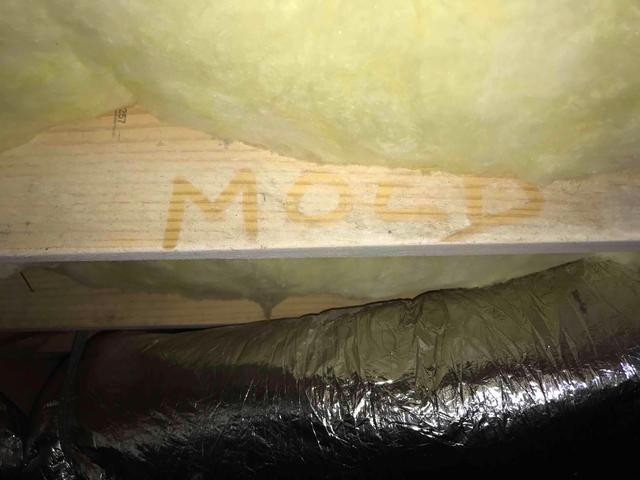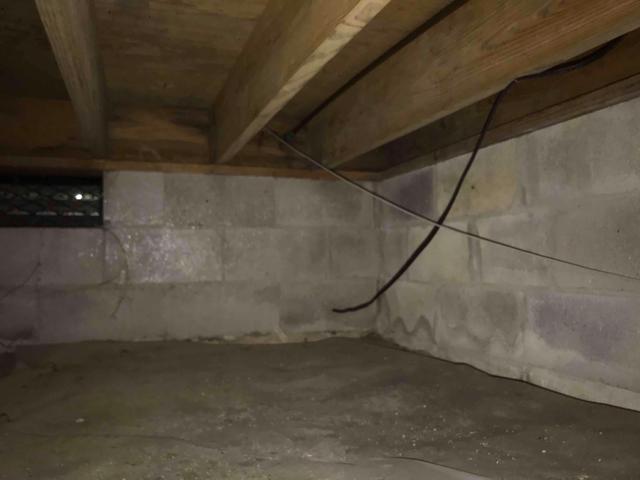Encapsulating an Irvington, VA Crawl Space
Challenge
An Irvington, VA homeowner contacted us after having a service person in their crawl space that indicated there was mold growing. The homeowner was interested in treating the mold and encapsulating the crawl space to prevent it from growing back.
At the inspection, we found that open vents were allowing moisture to enter the crawl space. The buildup of moisture, especially in warmer months, was allowing microbial growth on the joists. Insulation was missing in some places, and in others, it was beginning to fall. The existing vapor barrier was not sealed to the walls or piers, creating another entry point for moisture to invade the crawl space from the earth.
Solution
To meet the homeowner’s goals of remediating the mold and preventing it from coming back again, we began by removing all of the old fiberglass, vapor barrier, and any debris from the crawl space. We then applied Shockwave Antimicrobial to the floor joists killing the mildew/mold growth.
The next step was to install a new vapor barrier. This homeowner chose to install CleanSpace Light, a durable, 10mil vapor barrier. All seams were overlapped and sealed with 4-inch-wide vinyl tape. The liner is fastened to the walls and sealed 6 to 8 inches above outside grade. By sealing and fastening the liner to the wall, we can direct any moisture that works its way through the block wall underneath the liner, keeping it out of the crawl space. We also sealed and wrapped all piers. The Rim and Band, Sill plate, and all vents are also sealed with foam to block air leaks and prevent air carrying moisture from impacting the crawl space.
The crawl space walls are then sprayed with an R-10 of closed-cell spray foam insulation leaving a 2-inch viewing strip at the top of the block wall. This viewing strip is required by the Virginia Building Code and allows for termite companies to perform their inspections. We also installed a Friction Fit Door behind the existing exterior crawl space door. The Friction Fit Door completes the required continuous R-10 of insulation on foundation walls and air seals behind the exterior door.
We then installed the SaniDry Sedona Dehumidification System to further control the relative humidity (RH) in the crawl space. If relative humidity increases over 60%, the potential for microbial growth occurs. We set the Sedona at about 55% so that when the RH reaches this point, the unit will cut on, removing moisture from the crawl space air and circulating dry air.
This encapsulation system with a dehumidifier will help not only keep the crawl space dry, but it will help to prevent future microbial growth, improve the home’s indoor air quality, reduce energy bills, and make the homeowners more comfortable in their home, year-round.






